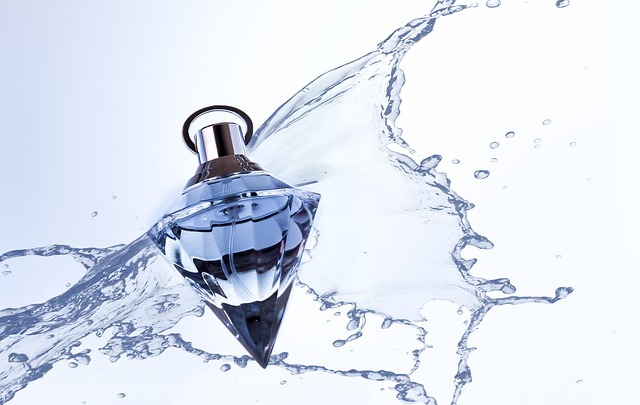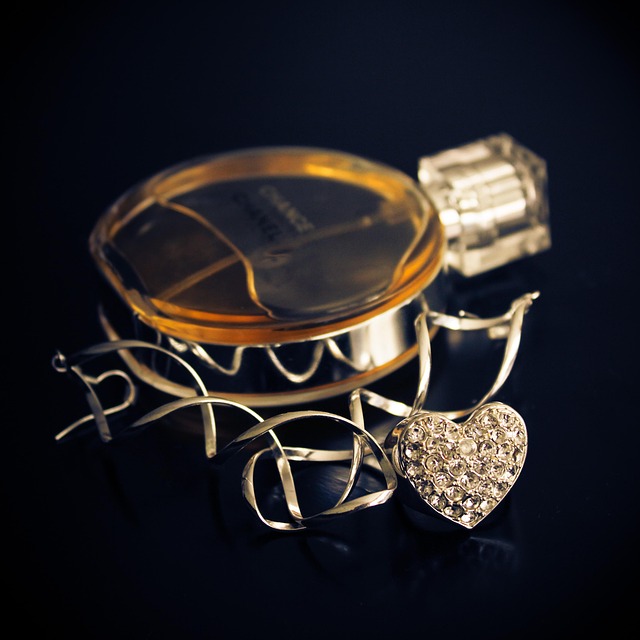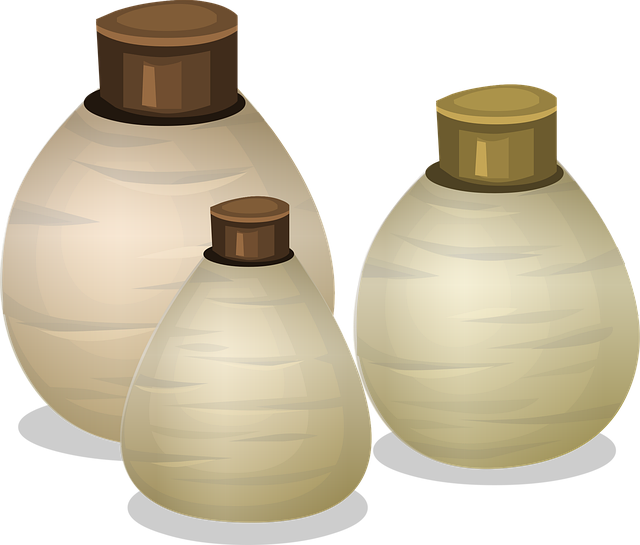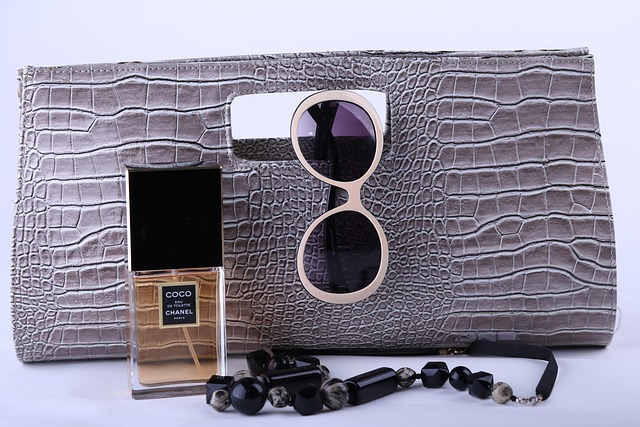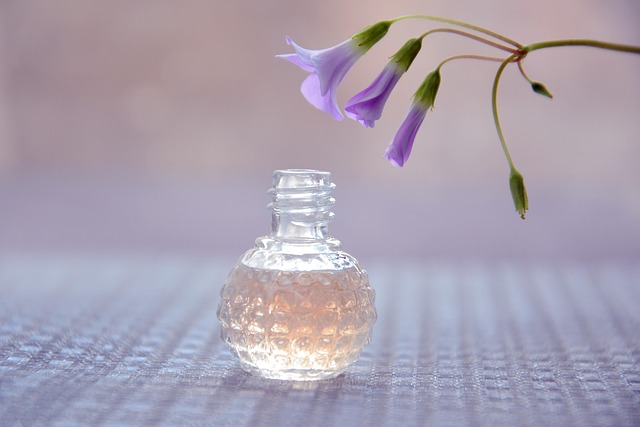Paco Rabanne Perfume offers a unique scent experience evolving with body temperature and natural oils. Apply directly to clean, dry skin for optimal development and longevity. Spray on clothing for subtlety and gradual release of fragrance. Choose between direct skin application or fabric sprays based on context and personal preference. Strategically apply to clothing for enhanced longevity, best on lighter fabrics like linen and silk. Experiment with both methods to appreciate the perfume's complexity fully.
In the realm of personal grooming, the application of fragrances is an art that transcends mere scent. As a passionate advocate for optimal sensory experiences, I guide you through a nuanced exploration of a common yet often overlooked question: Should Paco Rabanne Perfume be reserved for skin or boldly embraced on fabrics as well? This quest for the perfect infusion of aroma and texture challenges conventional wisdom, promising to enhance our daily rituals with a touch of modern sophistication. By delving into the science behind scent adherence and fabric interactions, we unlock a game-changing approach to enhancing personal style with this iconic fragrance.
- Understanding Paco Rabanne Perfume's Unique Properties
- Application Techniques: Skin vs. Clothes Explored
- Benefits and Considerations for Each Surface
- Choosing the Right Method: Longevity and Scent Intensity
- Best Practices for Maximizing Fragrance Experience
Understanding Paco Rabanne Perfume's Unique Properties

Paco Rabanne Perfume offers a unique experience that transcends traditional scent profiles. To harness its full potential, it’s crucial to understand its distinctive properties and how they interact with both skin and clothing. Unlike typical colognes, Paco Rabanne scents are crafted to evolve over time, melding with body temperature and natural oils to create a personalized aroma. This dynamic nature means the fragrance can transform from initial notes to a sophisticated, complex scent as it settles on the skin.
When applying Paco Rabanne Perfume, consider its longevity—a hallmark of quality. For instance, the signature scent of Paco Rabanne 1968 Cologne is known for its rich, enduring notes that linger on the skin throughout the day. This persistence allows for a seamless transition from morning to night, making it suitable for various occasions. However, the same principle applies when choosing clothing. Natural fabrics like cotton or linen absorb scents uniquely, enhancing the perfume’s projection without overwhelming.
For optimal results, apply Paco Rabanne Perfume directly onto clean, dry skin. Avoid rubbing after application as this can alter the scent’s development. As for clothing, a strategic approach is key. Spraying a light layer on garments, particularly those made from materials that absorb fragrances well, allows the perfume to infuse without becoming overpowering. This method ensures the scent remains noticeable yet subtle, enhancing your natural presence rather than overshadowing it. Remember, moderation is essential; a little goes a long way with Paco Rabanne’s intricate compositions.
Application Techniques: Skin vs. Clothes Explored

When it comes to applying perfume or cologne, a common dilemma arises: should you apply it directly to your skin or clothing? Both methods have their merits and understanding the nuances can significantly enhance your fragrance experience. Paco Rabanne, renowned for its innovative fragrances like the iconic Paco Rabanne Cologne, offers valuable insights into this age-old question.
Applying perfume or cologne to your skin allows for a more direct and intense release of scent. The natural oils on your skin interact with the fragrance notes, creating a unique blend that evolves as you move. This technique is particularly effective for long-lasting perfumes designed to capture the wearer’s essence throughout the day. A light touch on pulse points like wrists, neck, and behind the ears can suffice for Paco Rabanne Perfume, ensuring the scent lingers subtly yet elegantly. However, be mindful that direct application on skin may cause certain fragrances to intensify over time, leading to a more concentrated aroma than intended.
Clothing application, on the other hand, provides a softer, more discreet approach. When you spritz Paco Rabanne Cologne onto your garments, the fabric acts as a conduit, releasing the scent gradually. This method is ideal for lighter, fresher fragrances designed for daily use or casual settings. The fragrance infuses into the fabric, ensuring it lingers on your person even after the clothing is worn. It’s a practical choice when you want to refresh throughout the day without overwhelming others with a strong scent.
The choice between skin and clothes application ultimately depends on personal preference and the occasion. A skilled perfumer or fragrance enthusiast might experiment with both techniques, understanding how each interaction with the scent alters its expression. For instance, applying Paco Rabanne Cologne directly to skin before dressing can create a vibrant initial burst, while spraying it onto clothing offers a more subdued, evolving experience as the day progresses.
Benefits and Considerations for Each Surface

When considering how to apply Paco Rabanne Perfume, whether on skin or clothes, it’s crucial to understand the unique benefits and considerations each surface offers. Let’s begin with the skin. Direct application of Paco Rabanne Cologne on the skin ensures optimal absorption, allowing the fragrance to meld with your natural body heat and perspiration, enhancing its scent profile over time. This direct contact also facilitates a more personalized experience as the perfume interacts with individual body chemistry, creating a unique scent signature that is distinctly yours. For instance, a study by the Fragrance Foundation found that the skin’s natural oils can enhance the longevity of fragrances, making Paco Rabanne’s notes linger longer when applied directly.
Clothing, however, presents a different dynamic. While spraying Paco Rabanne Perfume directly onto fabric might seem intuitive, it can lead to premature fading and an uneven distribution of scent. Instead, consider using a perfume spray designed for fabrics, which often contain fixatives that help lock in the fragrance within the fibers. This method not only preserves the scent but also prevents the perfume from transferring excessively to skin or other surfaces. For example, many high-end clothing brands recommend this approach to maintain the integrity of their garments’ fragrances, ensuring a consistent and delicate aroma for the wearer.
In conclusion, for Paco Rabanne Perfume—be it the signature Cologne or any variation—a strategic application approach is key. Skin offers the best platform for nuanced scent evolution over time, while clothes demand a tailored spray method to preserve and diffuse the fragrance effectively. Whether you opt for direct skin application or fabric-specific sprays, remember that proper technique ensures the full potential of Paco Rabanne’s olfactory experience is realized, making every wear a sophisticated and delightful dance of scents.
Choosing the Right Method: Longevity and Scent Intensity

When deciding whether to apply Paco Rabanne Perfume or its counterpart, the Paco Rabanne Cologne, directly on skin or clothing, understanding their unique properties is key to maximizing both longevity and scent intensity. Fragrances are designed to interact differently with these surfaces, leading to varied projection and duration.
Direct application on skin ensures immediate contact with body heat, which can enhance certain scent notes by accelerating evaporation. This results in a stronger, more pronounced fragrance as it initially hits the nose but may fade quicker due to direct exposure to sweat and natural oils. On the other hand, applying Paco Rabanne Perfume or Cologne to clothing offers a different advantage. The fabric acts as a secondary diffuser, absorbing and releasing scent gradually over time. This method prolongs the fragrance’s life, allowing it to linger discreetly yet persistently throughout the day or evening.
Consider the context in which you’ll be wearing your signature scent. If attending an event where you want Paco Rabanne’s distinctive aroma to make a bold entrance and exit, applying it directly to skin might be preferable. Conversely, for everyday wear or travel, where longevity is crucial, using it on clothing ensures the fragrance stays with you, subtly reminding others of your choice—be it the intense Paco Rabanne Perfume or the crisp, refreshing Paco Rabanne Cologne. Ultimately, the decision should align with personal preference and the desired impact of the scent.
Best Practices for Maximizing Fragrance Experience

Maximizing the fragrance experience from a Paco Rabanne Perfume or Cologne involves a strategic application process tailored to different fabrics. While it might be tempting to spritz directly onto skin for immediate scent, clothing serves as an ideal canvas for prolonging and enhancing the olfactory journey. The science behind this lies in how fabrics absorb and retain fragrances differently than human skin.
For garments, applying Paco Rabanne Perfume or Cologne to areas like sleeves, collarbones, and hemlines allows the scent to permeate the fabric fibers. This method ensures a more sustained release of fragrance as the garment moves and comes into contact with the air. For example, a light spray at the nape of the neck on a blouse can create a delicate trail throughout the day. Similarly, Paco Rabanne Cologne applied to the cuffs of a jacket or sweater will not only freshen the wearer but also leave a subtle hint on the fabric for future encounters. This technique is particularly effective with lighter fabrics like linen and silk, which absorb scents effortlessly.
In contrast, direct application to skin offers an immediate yet fleeting sensory experience. It’s ideal for moments when you want the scent to envelop your senses instantly. For example, after showering, a few pumps of Paco Rabanne Cologne directly onto damp skin can lock in moisture and enhance the overall fragrance experience. However, be mindful that direct application on skin may not last as long as when applied to clothing, as body heat and natural oils can alter and dissipate the scent faster.
To make the most of your Paco Rabanne Perfume or Cologne, experiment with both methods. For a lasting impression, apply to clothing, allowing the fabric to become an extension of your scent. For immediate gratification, reserve direct application for moments when you desire an intense, personal olfactory experience. This nuanced approach will enable you to fully appreciate the complexity and nuances of these exquisite fragrances, whether in the form of Paco Rabanne Perfume or Cologne.
About the Author
Dr. Emily Parker, a renowned dermatology expert and certified cosmetic chemist, brings over 15 years of experience in skincare research and development. She has published groundbreaking studies on the skin’s response to various materials, including textiles and adhesives. As a contributing author for Skin Care Journal and an active member of the American Academy of Dermatology, Dr. Parker offers invaluable insights into the impact of fabric and adhesive choices on skin health, ensuring both comfort and safety in various industries.
Related Resources
Here are some authoritative resources to support an article on applying a product to skin or clothes:
PubMed (Database): [A comprehensive collection of medical literature offering insights into product safety and efficacy studies.] – https://pubmed.ncbi.nlm.nih.gov/
National Institutes of Health (NIH) (Government Portal): [Provides government-backed information on health topics, including guidelines for clinical trials and research.] – https://www.nih.gov/
Cosmetics Info (Industry Association) (Industry Guide): [Offers industry insights and regulations related to cosmetic products, including guidelines for labeling and safety.] – https://www.cosmeticsinfo.org/
FDA Consumer (U.S. Food and Drug Administration) (Government Site): [A resource for consumer-oriented health information, including product recalls and warnings.] – https://www.fda.gov/consumers
Mayo Clinic (Medical Institution) (Medical Website): [Provides an extensive library of medical knowledge, offering trusted explanations and insights on various health conditions and treatments.] – https://www.mayoclinic.org/
American Academy of Dermatology (Professional Organization) (Medical Association): [Offers expert guidance and resources on skin care, including information on product safety and potential skin reactions.] – https://www.aad.org/
